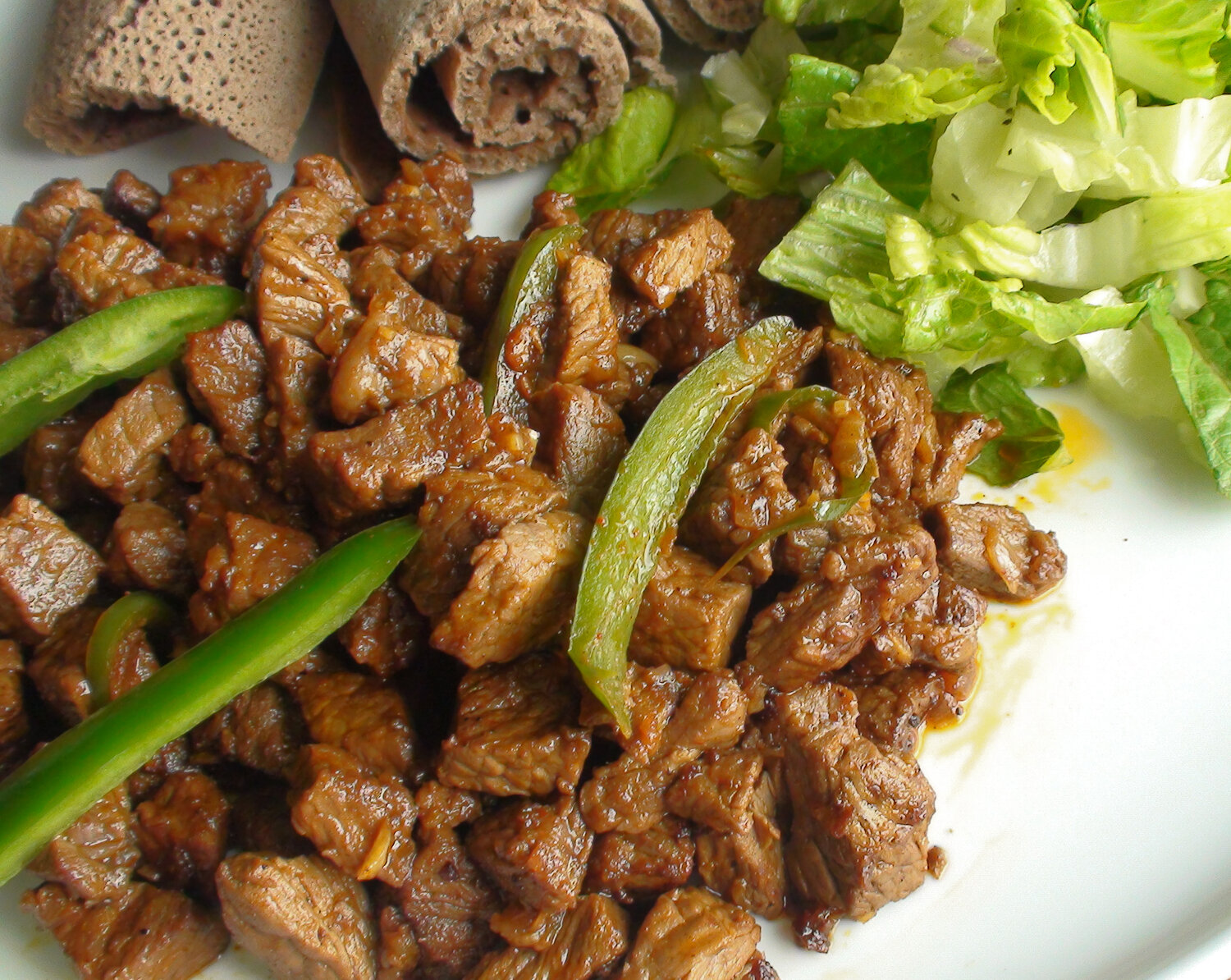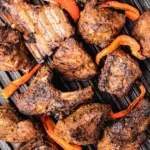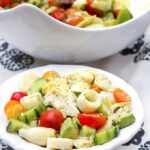Exploring Ethiopian cuisine offers a unique and flavorful experience that’s sure to tantalize your taste buds. You’ll discover a rich tapestry of spices, textures, and traditional cooking methods that make these dishes truly stand out.
These 15 Ethiopian food recipes provide an authentic taste of Ethiopia, whether you’re new to the cuisine or a seasoned fan. From hearty stews to the iconic spongy flatbread, you’ll find a variety of dishes that highlight the depth and variety of Ethiopian food.
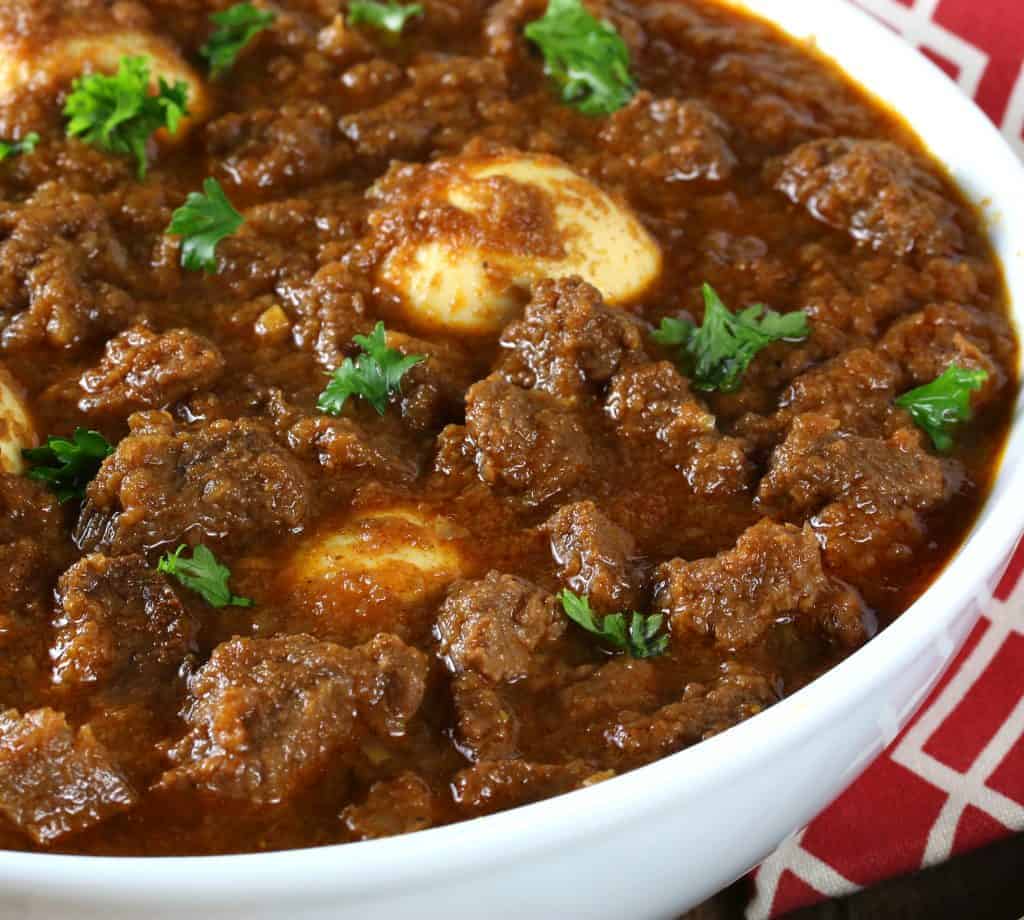
1) Doro Wot
Doro Wot, also known as Ethiopian spicy chicken stew, is one of the most cherished dishes in Ethiopian cuisine. This hearty and flavorful stew combines tender chicken pieces with a rich, spicy sauce made from berbere spice blend, onions, garlic, and ginger.
You start by cooking onions until they caramelize, adding depth and sweetness to the dish. Stir in minced garlic, ginger, and the essential berbere spice mix. This blend includes chili powder, paprika, fenugreek, coriander, and other spices, giving Doro Wot its distinct heat and complexity.
Next, add pieces of chicken, traditionally with the skin on, to absorb the flavors of the sauce. Cover the chicken with broth and let it simmer on low heat for around 45 minutes. Stir occasionally to ensure even cooking and to prevent sticking.
For extra richness, incorporate niter kibbeh, a spiced Ethiopian butter, and tomato paste into the mix. A unique aspect of Doro Wot is the addition of hard-boiled eggs during the last 15 minutes of cooking. Stab the eggs lightly with a fork to help them soak up the stew’s flavors.
Serve Doro Wot with injera, a sourdough flatbread that complements the stew perfectly, soaking up the spicy sauce. Enjoy this flavorful dish that is a staple in Ethiopian homes and restaurants.
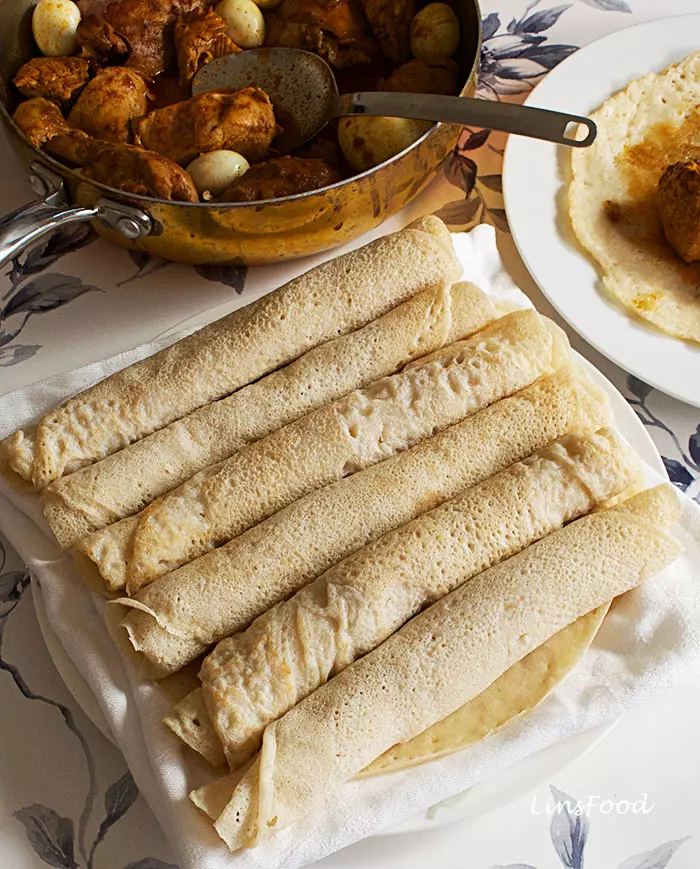
2) Injera
Injera is a staple in Ethiopian cuisine, known for its unique taste and texture. This flatbread has a slightly sour flavor and a spongy feel.
You make injera using teff flour, which gives it a distinct taste. Occasionally, recipes mix teff with other flours to adjust the flavor and texture.
Fermentation is key to injera’s unique character. You let the batter sit for several days, which allows it to develop its tangy taste.
When ready, you cook injera on a large, flat skillet. The heat creates tiny holes in the surface, making it perfect for soaking up sauces and stews.
Injera serves as both dish and utensil. You tear bits off to scoop up other ingredients, making meals a communal experience.
Both quick and traditional recipes exist, so you can try different methods depending on your time and preference.
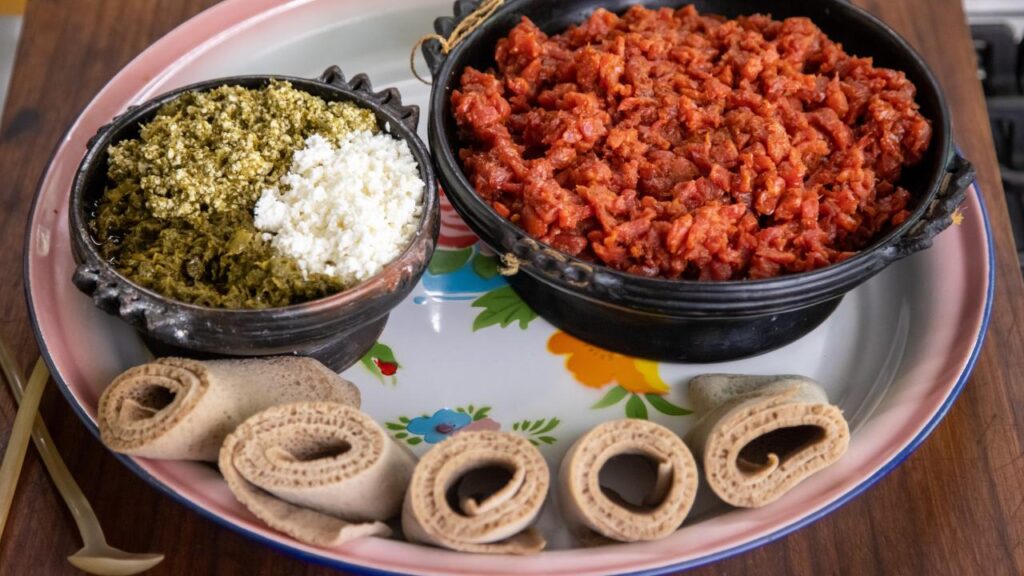
3) Kitfo
Kitfo is a traditional Ethiopian dish made from minced raw beef. It’s flavored with a blend of spices and clarified butter called niter kibbeh. This dish is rich and savory, making it a favorite among those who enjoy bold flavors.
To prepare Kitfo, you start with lean beef, trimming off any excess fat. The meat is finely chopped using a knife or a food processor.
Next, you melt niter kibbeh, an herb-infused clarified butter, in a skillet. Mix the minced beef with the melted butter. Then, add spices like mitmita, a blend that includes chili, cardamom, and salt.
Kitfo can be served raw, lightly cooked, or fully cooked, depending on your preference. It is traditionally served with injera, a type of Ethiopian flatbread, or with kocho, a bread made from the enset plant.
This dish offers a unique taste of Ethiopian cuisine and is a must-try for any food enthusiast interested in exploring international dishes. Enjoy it as part of a larger Ethiopian meal or on its own for a flavorful experience.
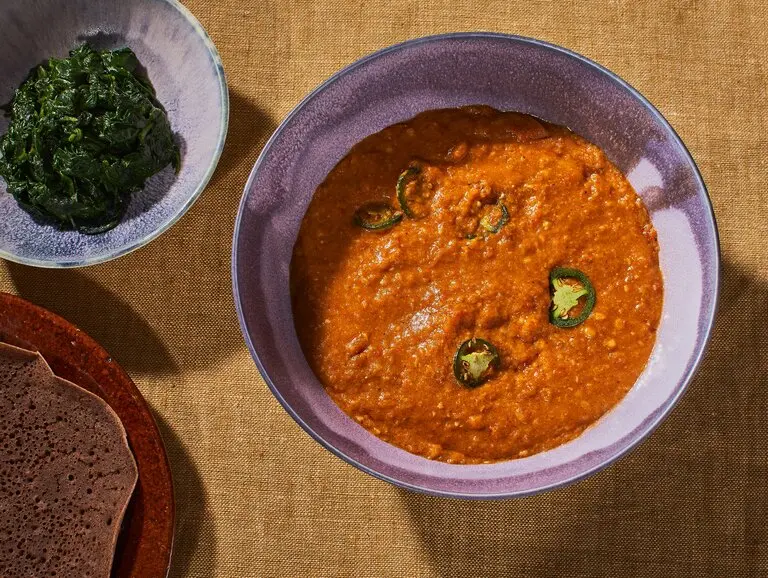
4) Shiro
Shiro is a popular Ethiopian dish made from ground chickpeas. It’s a flavorful stew that’s often enjoyed with injera, the traditional Ethiopian flatbread. This dish is a favorite due to its simplicity and rich taste.
To make shiro, you start by sautéing diced onions in some oil until they are soft and fragrant.
Next, add minced garlic and chopped tomatoes to the onions. Cooking these together for a few minutes helps to release their flavors.
Then, gradually add the finely ground chickpea flour to the pot. This gives the stew its thick texture. Slowly pour in water while stirring to help combine everything.
Let the mixture simmer on low heat. The chickpea flour will absorb the flavors of the onions, garlic, and tomatoes. Stir occasionally to prevent sticking.
Shiro is often seasoned with berbere, a blend of spices that adds depth and heat to the dish. You can adjust the seasoning to your taste.
Serve shiro hot with injera or over rice. It’s a comforting and nutritious meal that’s bursting with flavor. Whether for a special occasion or a simple meal, shiro is a dish you’ll enjoy making and eating.
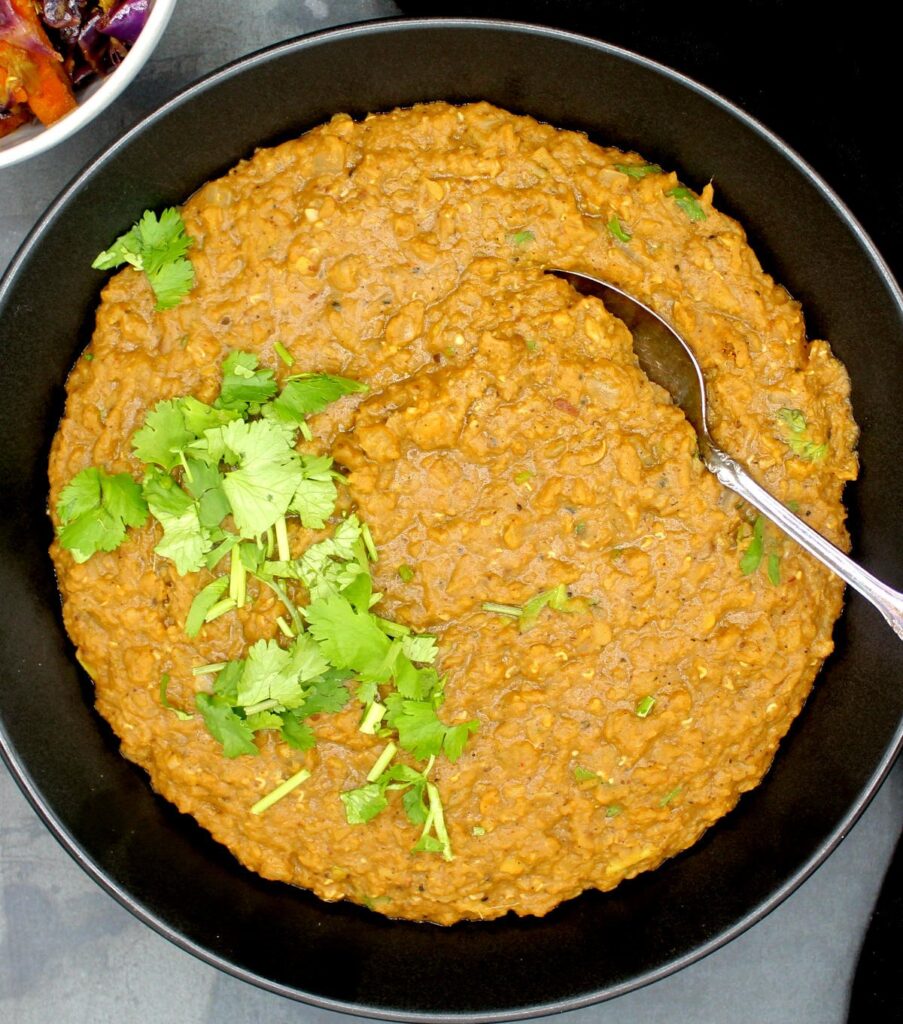
5) Misir Wot
Misir Wot is a flavorful Ethiopian dish made from red lentils. It’s highly seasoned with berbere, a key Ethiopian spice blend, and niter kibbeh, a spiced clarified butter.
Start by rinsing the red lentils until the water runs clear. Set them aside for later use. Melt niter kibbeh in a large pot over medium heat.
Add chopped onions to the pot and cook until they are golden brown or soft and translucent. This process usually takes about 8-10 minutes.
Next, add minced garlic, grated ginger, and tomato paste to the onions. Stir in the berbere spice and cook for another 3-7 minutes, making sure everything is well mixed.
Now, add the rinsed lentils to the pot. Pour in enough water to cover the lentils. Let it simmer, stirring occasionally until the lentils are very soft.
You’ll end up with a thick, rich stew. Serve your Misir Wot with injera, Ethiopian flatbread, for an authentic experience. Enjoy this hearty and spicy dish as part of your Ethiopian meal.
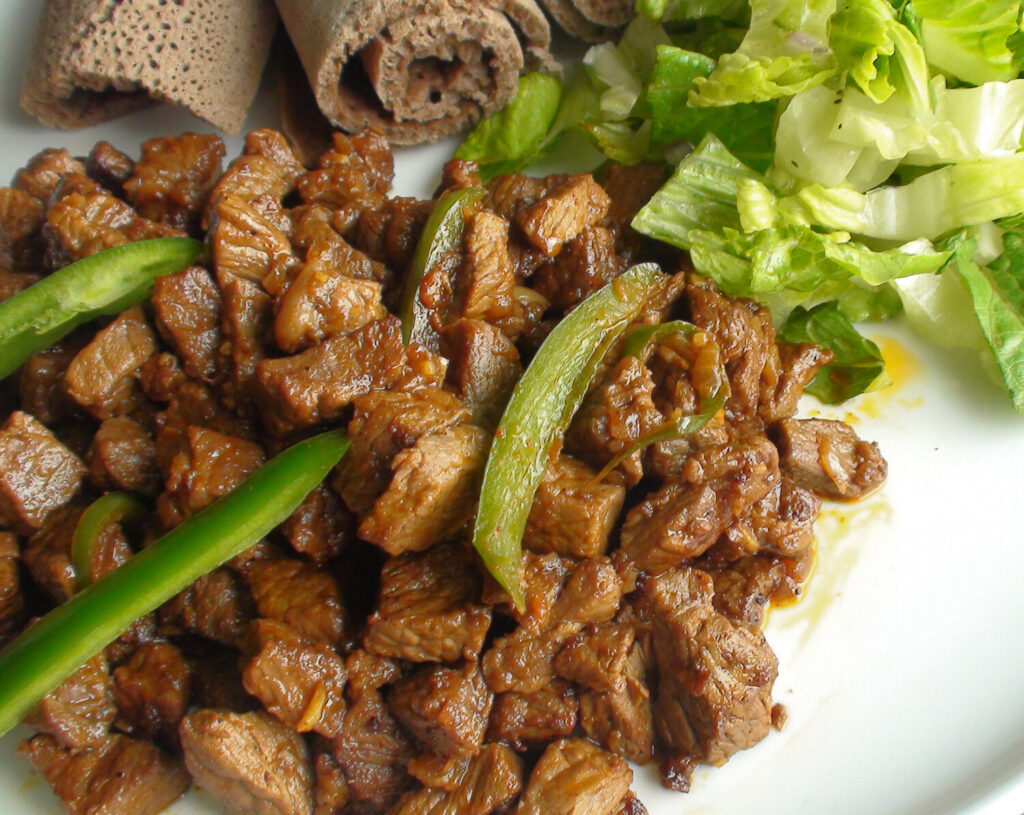
6) Tibs
Tibs is a popular Ethiopian dish known for its savory and spicy flavors. It typically consists of sautéed meat, often beef or lamb, cooked with onions, tomatoes, and various spices.
To make Tibs, start by heating a skillet over high heat. Add oil and then the meat, making sure to leave space between pieces. Brown the meat well on one side before stirring.
Next, add onions and cook until they begin to char. This deepens the flavor of the dish. Add tomatoes and cook for a few more minutes. Some variations also include spiced butter, which adds richness.
Stir the mixture well and cook until the meat reaches your preferred level of doneness. You can adjust the heat and spices to suit your taste. Serve Tibs hot, often with injera, a traditional Ethiopian flatbread. This allows you to scoop up the delicious meat and sauce.
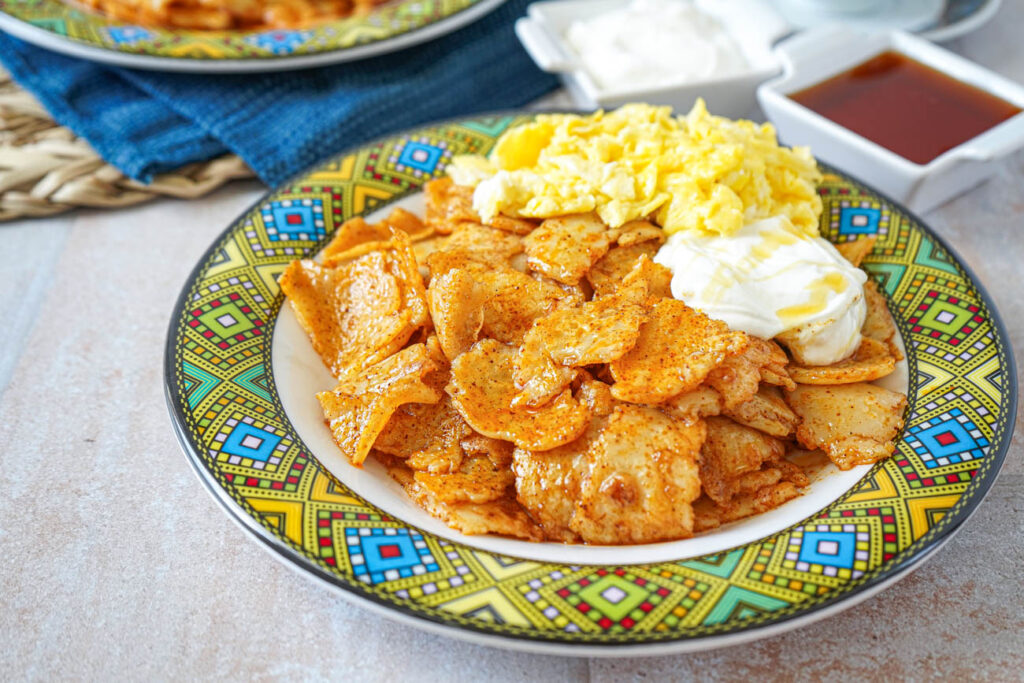
7) Chechebsa
Chechebsa is a popular Ethiopian breakfast dish. It’s made from torn pieces of flatbread cooked in oil and spices. This dish is known for its simplicity and flavorful taste.
To prepare Chechebsa, start by making the flatbread. Mix flour and salt in a bowl. Gradually add water while stirring until you get a thin pancake-like batter.
Heat oil in a skillet over medium heat. Pour a ladle-full of batter into the pan, forming a thin, even circle. Cook until golden on the bottom, then flip and cook the other side.
Cut the flatbread into small pieces. In the same skillet, heat some kibe (Ethiopian clarified butter) and add berbere or paprika. Stir in the pieces of flatbread, mixing them with the spiced oil.
For a delicious finish, you can dress it with honey or yogurt. This makes Chechebsa a delightful combination of savory and slightly sweet flavors. Enjoy it warm for the best experience.
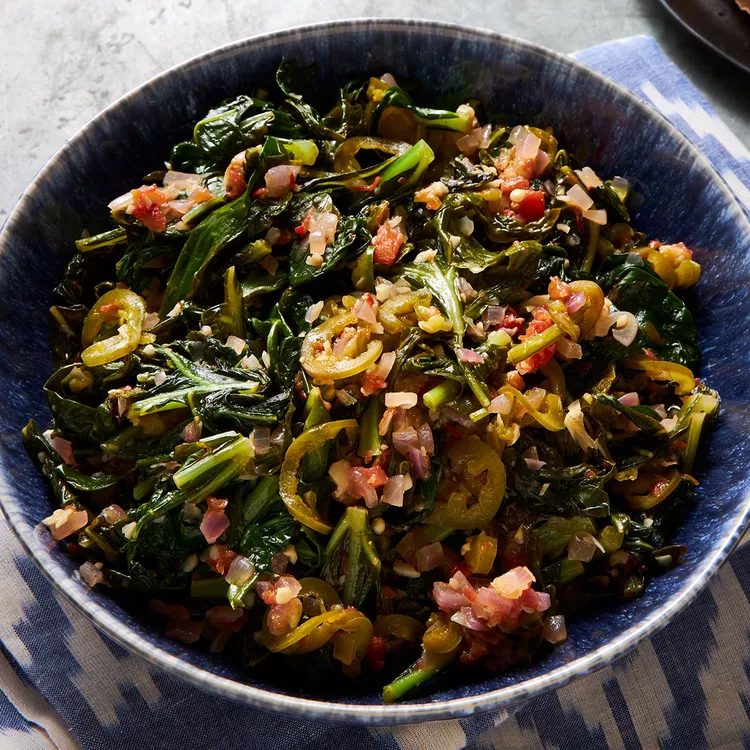
8) Gomen
Gomen is a traditional Ethiopian dish made from collard greens. These leafy greens are cooked with a mix of spices that give them a unique flavor.
To prepare Gomen, start by heating oil or niter kibbeh (a spiced clarified butter) in a pan. Add chopped onions, and cook them until they are soft and translucent.
Next, add minced garlic, ginger, and spices like cumin, cardamom, and paprika. Stir the mixture well and let it cook for a minute.
Then add the collard greens. Cook them until they turn bright green and wilt but still remain slightly crispy. This usually takes about 5-7 minutes.
Some versions of Gomen also include meat, making it Gomen Besiga. If you prefer a vegetarian option, simply skip the meat.
Gomen is often enjoyed with injera, a traditional Ethiopian flatbread. The greens and spices create a flavorful dish that pairs well with the tangy taste of injera.
This dish is a staple in Ethiopian cuisine and offers a tasty and nutritious way to enjoy collard greens.
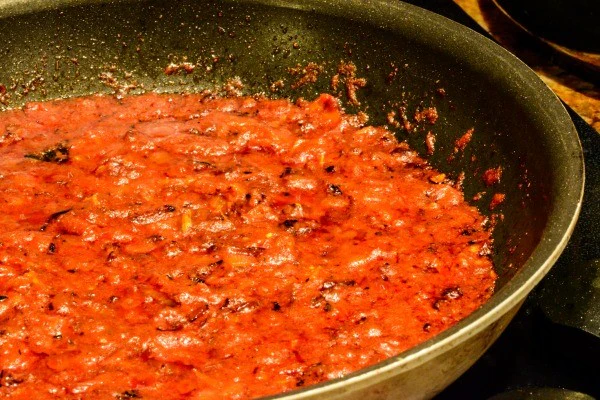
9) Berbere Sauce
Berbere sauce is a spicy and flavorful Ethiopian sauce that uses a spice blend called berbere. This spice blend contains fenugreek, paprika, ginger, coriander, and other spices.
To make Berbere sauce, start by heating olive oil in a saucepan over medium heat. Add minced garlic and chopped onion, and sauté until they are golden brown.
Next, add your berbere spice mixture to the saucepan. Stir it constantly for about a minute to release the flavors. Then, pour in tomato puree and vegetable broth, mixing well.
You can adjust the thickness of the sauce by adding a little water or oil. If you want a thinner sauce, add more liquid. Taste the sauce and adjust the salt and lemon juice as needed.
This sauce is great for marinating meats like pork, chicken, or lamb. You can also use it as a dip or drizzle for roasted vegetables. The rich, spicy flavors will enhance the taste of any dish.
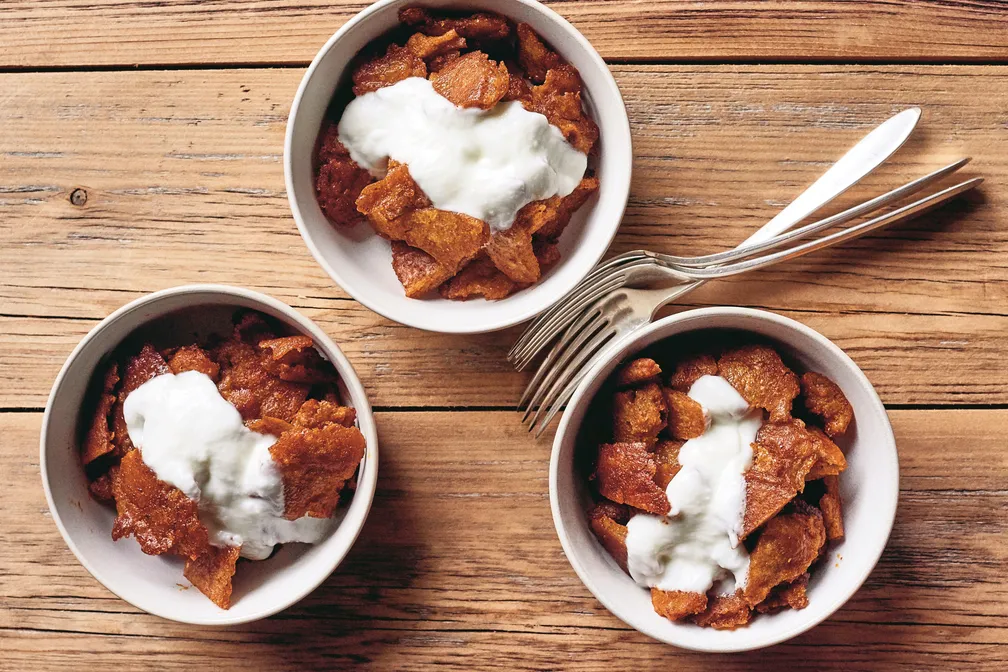
10) Fit Fit
Fit Fit is a traditional Ethiopian dish made from crumbled injera, a type of sourdough flatbread. It’s often enjoyed for breakfast.
To make Fit Fit, you start by crumbling the injera into bite-sized pieces.
Next, heat some oil in a skillet over medium heat. Add finely chopped onions and sauté until they’re soft and translucent.
Mix in berbere, a spicy seasoning blend. Let the spices sizzle and release their flavors.
Add the crumbled injera to the skillet. Stir well to coat the pieces with the spiced mixture.
Cook for a few more minutes until the injera is evenly warmed. You can adjust the seasoning to taste.
Serve immediately, often with a side of yogurt or fresh vegetables.
Fit Fit is loved for its simple, yet flavorful profile.

11) Atayef
Atayef, also known as Qatayef, is a popular Middle Eastern dessert often enjoyed during Ramadan. These stuffed pancakes are filled with sweet or savory fillings and then fried or baked.
The batter for Atayef is simple, made from all-purpose flour, cream of wheat, yeast, sugar, salt, and water. Some recipes also add baking powder or baking soda.
Once the batter is prepared, it’s cooked on a non-stick skillet. You only cook one side, leaving the other side soft and pliable for folding.
For the filling, you can use nuts, like walnuts mixed with sugar and cinnamon. Another common filling is a creamy cheese, such as akawi or cream cheese.
After filling and sealing the pancakes, you can choose to deep fry or bake them until golden and crispy. Deep frying will give them a crunchy texture, while baking is a lighter option.
Finally, the atayef is soaked in a simple syrup flavored with rose or orange blossom water. It adds a sweet, floral note to the dessert.
Serve your atayef warm or at room temperature. They make a delightful treat for any occasion.
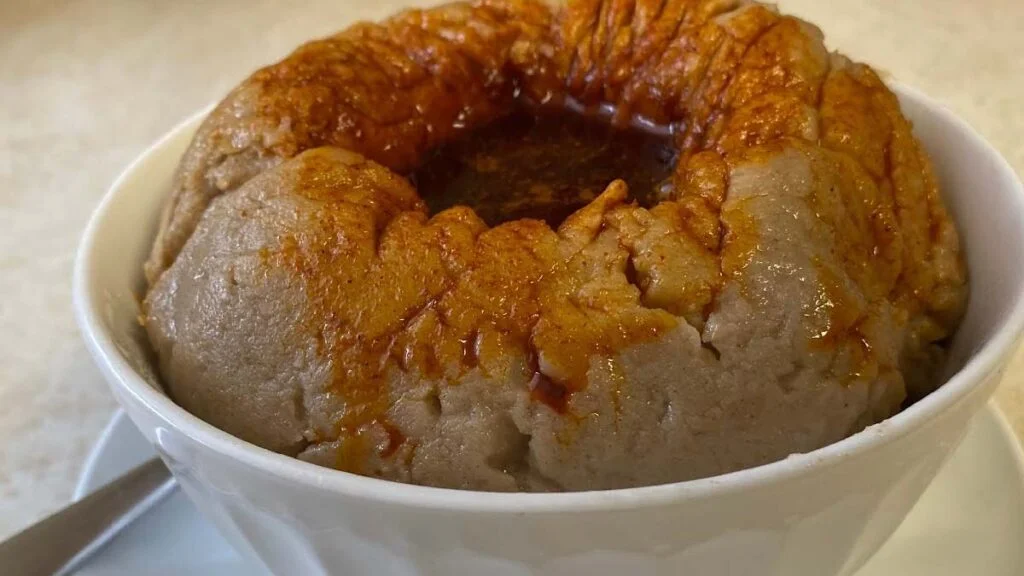
12) Genfo
Genfo is a traditional Ethiopian breakfast porridge. It is simple to make and very filling.
Start by boiling water in a pot. Add a pinch of salt and a tablespoon of oil. Slowly add bula or wheat flour while stirring continuously. This prevents lumps and forms a smooth paste.
Keep stirring until the mixture thickens. This usually takes 10-15 minutes. You want a consistency similar to porridge.
Once thickened, pour the Genfo into a serving bowl. Create a small well in the center. Fill this well with niter kibbeh (clarified Ethiopian butter) and sprinkle mitmita or berbere for spice.
Genfo is best enjoyed warm. Dip each bite into the butter and spice mixture for added flavor. Enjoy it with a side of yogurt to balance the spice.
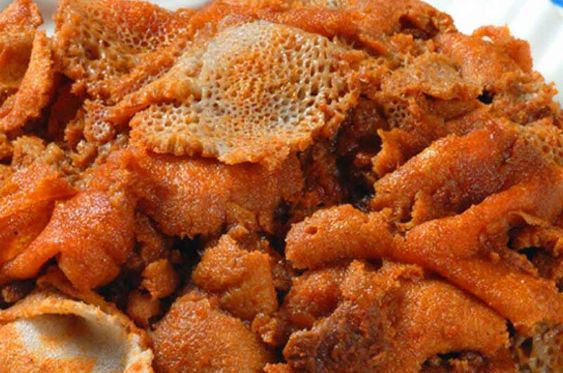
13) Firfir
Firfir is a popular Ethiopian breakfast dish known for its rich flavor and satisfying texture. It typically consists of torn injera, a sourdough flatbread, mixed with spicy sauce.
To make Firfir, you start by making the sauce. Cook onions in a large saucepan until they start to brown. Add oil and garlic paste, then cook until fragrant.
Next, add chopped tomatoes and cook until they soften. Stir in water, berbere seasoning, and dried beef. Simmer the mixture until the beef becomes tender and the sauce thickens.
Finally, add the torn injera to the sauce. Mix well to ensure the injera absorbs the flavors. Cook for a few more minutes, stirring gently to avoid breaking the bread. Serve hot and enjoy the robust flavors of this traditional dish.
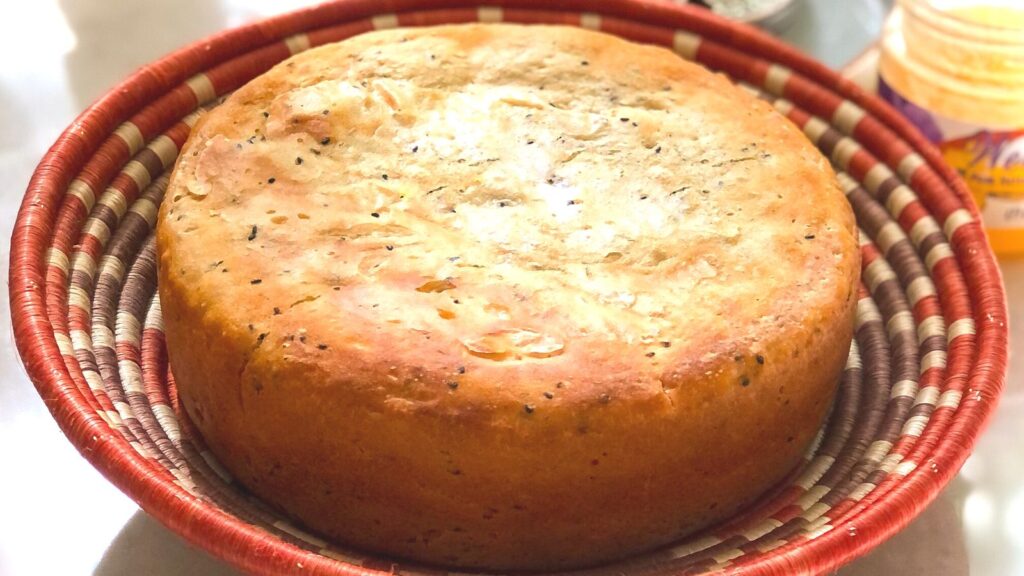
14) Dabos
Dabos, also known as Ethiopian Honey Bread, is a delicious, slightly sweet bread. To make it, you start by mixing yeast with warm water and letting it sit for about 15 minutes.
Then, you beat honey with an egg, salt, and spices in another bowl. Warm up milk with melted butter. Combine these mixtures with flour in a large bowl or a stand mixer.
Mix everything together until a soft dough forms. Let this dough rise until it doubles in size. This step usually takes a few hours or can be done overnight.
Once the dough is ready, place it in a covered pot or Dutch oven. Bake for about 45-50 minutes at a moderate temperature.
To get a nice crust, flip the bread out of the pot onto a wire rack and then back into the pot, upside down. Bake for another 10 minutes.
Finally, take the bread out and let it cool before slicing. Dabos is perfect with a spread of butter or drizzled with extra honey for added sweetness.
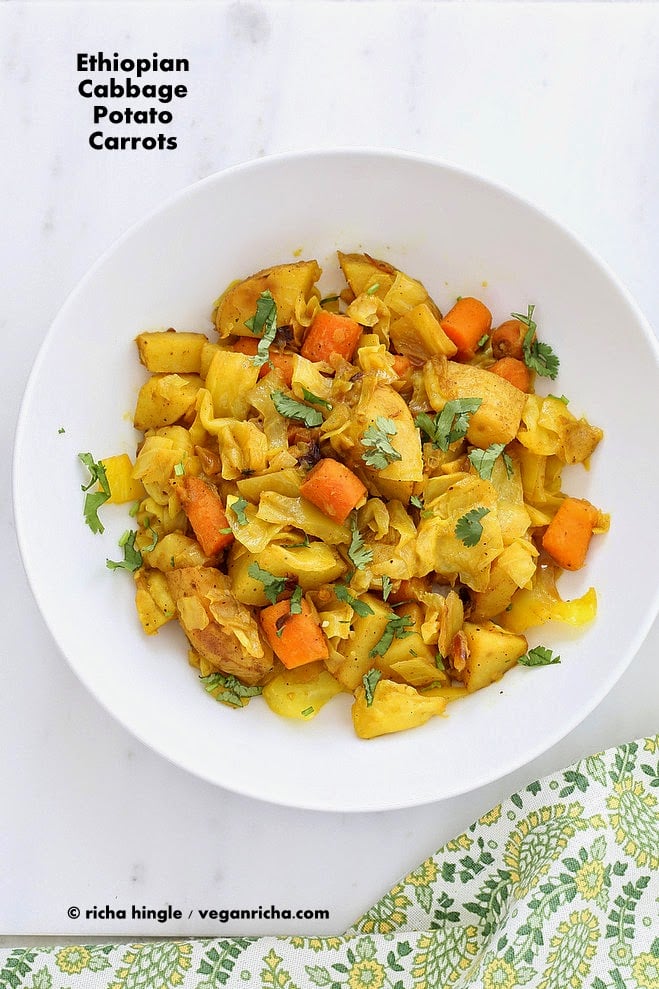
15) Atakilt Wat
Atakilt Wat is a beloved Ethiopian dish made of cabbage, potatoes, and carrots. It delivers a hearty, flavorful experience. You’ll need common spices and vegetables to prepare it.
Begin by heating oil in a large pan. Sauté chopped onions until they are translucent. Green chili can be added for heat.
Next, incorporate carrots and potatoes. Cook until they start to turn golden.
Add grated ginger, minced garlic, turmeric, cumin, black pepper, and salt. These spices infuse the vegetables with a warm, rich taste.
Finally, include the cabbage. Cook it for a few minutes, ensuring it remains slightly crisp.
Serve Atakilt Wat hot, ideally with rice or traditional Ethiopian injera flatbread. This dish shines due to its simplicity and robust flavors. Enjoy!
History and Cultural Significance of Ethiopian Food
Ethiopian food has a rich history that dates back thousands of years. You will find that the core elements of this cuisine have been passed down through generations, reflecting the country’s long-standing agricultural practices and diverse cultures.
One of the most notable staples in Ethiopian cuisine is injera. This sourdough flatbread, made from teff flour, has been a central part of Ethiopian meals for centuries. Its slightly sour taste and spongy texture come from the fermentation process, which can last up to three days.
Ethiopian cooking often showcases a unique blend of spices. These spices are central to dishes like wat, a spicy stew often made with meat or vegetables. The use of niter kibbeh (seasoned clarified butter) and berbere (a spice mix) highlights how important spices are in bringing depth to the flavors of Ethiopian food.
Food in Ethiopia is also deeply tied to social and communal activities. Meals are typically shared from a common plate, emphasizing the importance of community and togetherness. This tradition extends to special occasions, where feasts feature a variety of dishes served on a large platter.
Ethiopian food has evolved while retaining its traditional roots. Blended influences from neighboring cultures have shaped this cuisine, making it a symbol of the country’s heritage and diversity. When you enjoy Ethiopian food, you’re also experiencing a piece of its history and cultural significance.
Common Ingredients in Ethiopian Cuisine
Ethiopian cuisine is rich and diverse, relying heavily on unique spices, grains, legumes, vegetables, and herbs to create its distinctive flavors.
Spices and Seasonings
Spices are the heart of Ethiopian cooking. Berbere is a key seasoning blend, featuring chili peppers, garlic, ginger, basil, and fenugreek. This spice mix gives many dishes their fiery heat.
Another essential spice is mitmita, a hot chili powder often used in meat dishes. Niter kibbeh, a clarified butter, is also common, infused with spices like garlic, ginger, and cumin.
Turmeric and cumin lend their warmth to many recipes, while cardamom and cinnamon provide sweeter notes.
Grains and Legumes
The main grain in Ethiopian cuisine is teff, used to make injera, a unique sourdough flatbread. Teff is packed with protein and nutrients.
Barley and millet are also important, often used in bread and porridge. Among legumes, lentils are standout. They’re used in many dishes like misir wot, a spicy lentil stew.
Chickpeas feature prominently too, particularly in making shiro, a thick, flavorful stew.
Vegetables and Herbs
Ethiopian dishes often incorporate a variety of vegetables. Potatoes, carrots, and cabbage are common in stews and wots. Spinach and kale are frequently used in sautéed dishes, providing both color and nutrition.
Herbs like garlic and ginger are everyday staples, adding depth to many recipes. Tomatoes and onions are the backbone of many stews and sauces, building robust bases for the rich flavors to come.
Cooking Techniques in Ethiopian Recipes
Ethiopian cooking involves unique methods that enhance the rich flavors of the country’s cuisine. Key techniques include preparing injera, making traditional stews and wot, and using fermentation to develop distinct tastes.
Injera Preparation
Injera is a staple in Ethiopian cooking. This sourdough flatbread is made from teff flour, water, and sometimes barley or wheat. The batter ferments for about two to three days, creating a tangy flavor.
Once ready, you pour the batter onto a large, preheated griddle called a mitad. Cook it covered for a few minutes until holes form on the surface and the edges lift easily. Injera should be soft, porous, and slightly spongy.
Traditional Stews and Wot
Ethiopian stews, known as wot, are rich and flavorful. Doro Wot, a chicken stew, is one popular example. To make wot, start with a base of slowly caramelized onions. Then, add berbere, a spice mix that gives these stews their signature heat and flavor.
Meats or vegetables simmer with spices and sometimes niter kibbeh, a spiced clarified butter. The cooking process can take hours, allowing the flavors to meld together. It’s common to serve wot on a large piece of injera.
Fermentation Processes
Fermentation plays a crucial role in Ethiopian cuisine, especially in preparing injera. The process involves mixing teff flour with water and allowing it to ferment. This not only creates the bread’s unique texture and taste but also makes it more nutritious.
Another fermented product is tej, a traditional Ethiopian honey wine. Tej ferments using wild yeasts and typically takes a few weeks to develop its distinct flavor. Fermentation adds depth and complexity to Ethiopian dishes, making them both unique and healthful.
Health Benefits of Ethiopian Food
Ethiopian food is not only delicious but also packed with nutrients that can benefit your health. Here are some key reasons why you might consider incorporating Ethiopian dishes into your diet.
High in Fiber
Staples like teff and lentils are rich in fiber. High-fiber diets can help regulate your bowel movements, control blood sugar levels, and lower your risk of heart disease.
Rich in Vitamins and Minerals
Teff, a common ingredient in Ethiopian cuisine, is loaded with essential minerals such as iron, calcium, and magnesium. These contribute to strong bones, better immune function, and improved overall health.
Low in Gluten
Many Ethiopian dishes feature ingredients like teff, which is naturally gluten-free. This makes Ethiopian food a great choice if you need or prefer to avoid gluten.
Heart Health
Eating legumes, common in Ethiopian food, can help lower LDL cholesterol and improve your heart health. Ingredients like lentils and chickpeas are particularly beneficial.
Spices and Flavors
The use of spices such as berbere and turmeric in Ethiopian cooking not only adds flavor but also has anti-inflammatory and antioxidant properties.
Lean Proteins
Ethiopian dishes often include lean proteins such as chicken, lentils, and fish. These proteins are important for muscle maintenance and overall health.
Balanced Diet
Ethiopian cuisine typically combines vegetables, grains, and proteins in a single meal, providing a well-balanced diet that can meet various nutritional needs.
